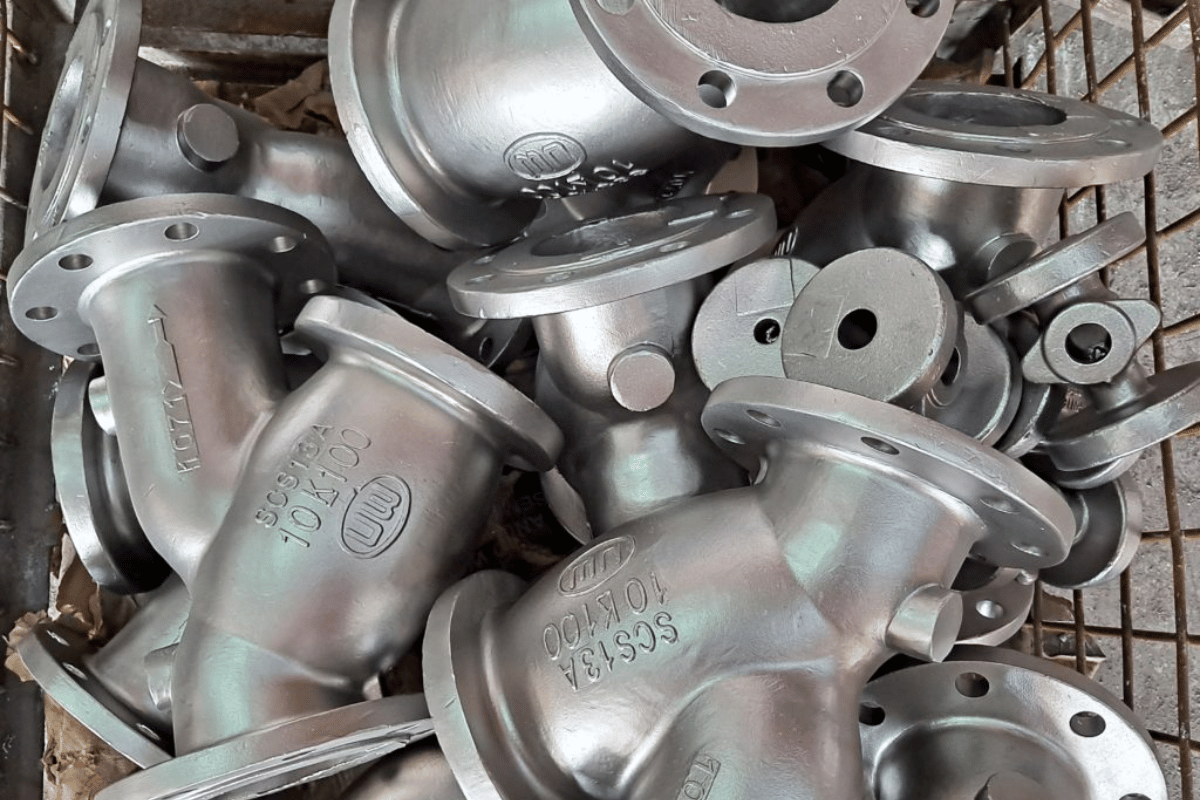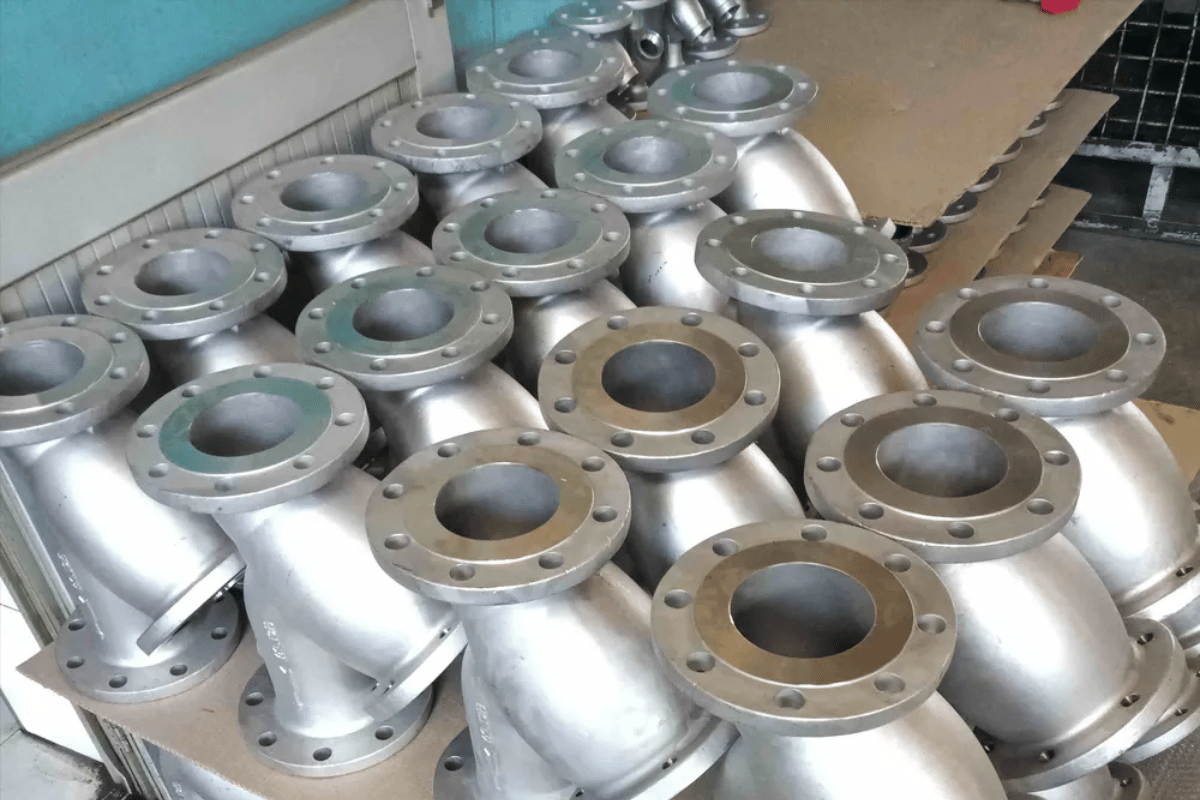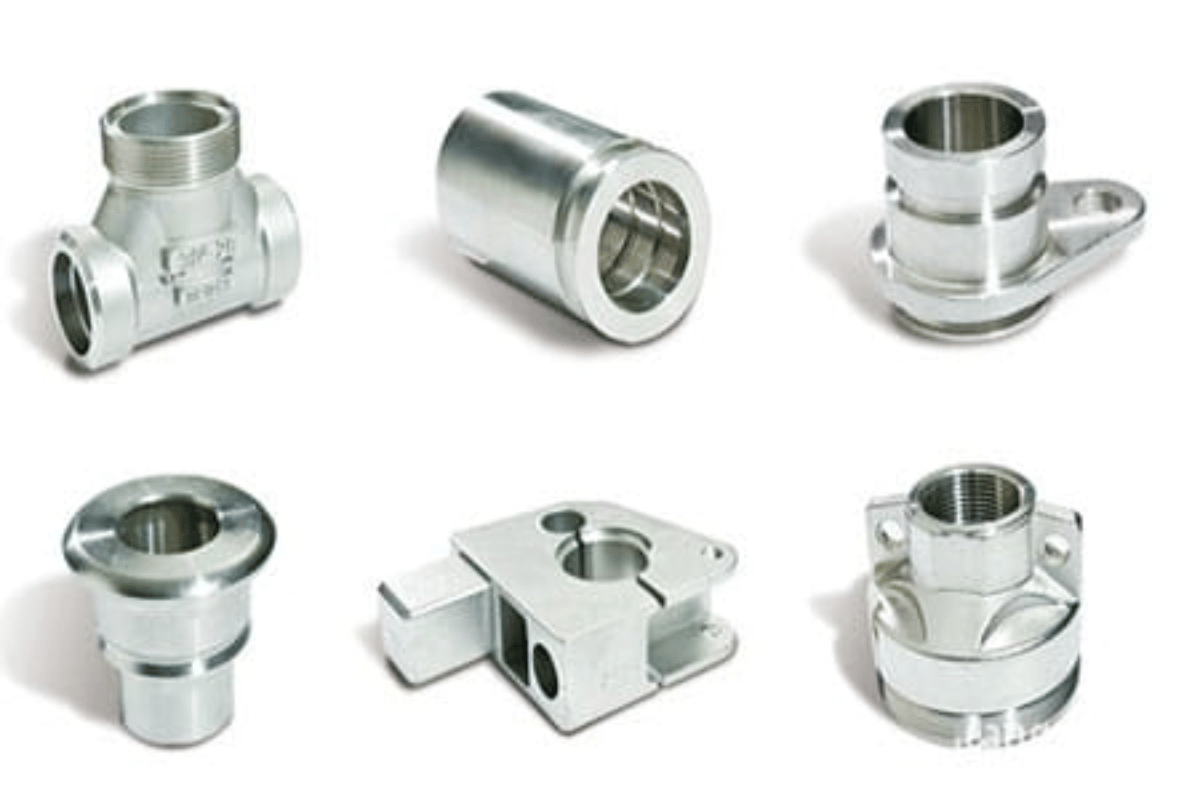In the realm of modern engineering, where durability is a cornerstone of success, the marriage of craftsmanship and technology takes center stage. This exploration delves into the art and science behind crafting investment cast 316 stainless steel parts, a process that epitomizes the fusion of tradition and innovation. At the heart of this evolution lies CNC precision, a game-changing technology that not only refines the intricacy of stainless steel components but also elevates their endurance and quality.
As industries continue to demand high-performance materials capable of withstanding the harshest environments, investment casting has emerged as a preferred method for creating stainless steel parts. The integration of CNC technology amplifies the precision of this process, empowering manufacturers to craft components that excel in durability, reliability, and functionality. Through this journey, we will uncover the profound impact of CNC precision on the creation of investment cast 316 stainless steel parts, redefining what durability means in a rapidly evolving world of engineering and design.
Investment Casting and Stainless Steel
Investment casting, also known as lost-wax casting, is a time-honored technique that dates back centuries. This intricate process involves creating precise molds from wax patterns, which are then transformed into intricate metal components. Among the various metals used in investment casting, 316 stainless steel stands out for its exceptional properties and versatility.
316 stainless steel, an austenitic alloy, boasts remarkable corrosion resistance and high-temperature stability, making it a sought-after choice across industries. From marine environments to medical applications and aerospace endeavors, this alloy’s ability to withstand the challenges of its surroundings has solidified its position as a staple in modern engineering.
In marine settings, where exposure to saltwater and harsh elements is constant, the resilience of 316 stainless steel is indispensable. Medical instruments and implants made from this alloy offer the strength and biocompatibility necessary for life-changing applications. In the aerospace realm, where lightweight yet robust materials are essential, 316 stainless steel emerges as a reliable solution. Its combination of durability, formability, and corrosion resistance contributes to its widespread adoption.
As we embark on the journey to explore how CNC precision enhances investment casting of 316 stainless steel parts, it’s vital to understand the foundations of this timeless process and the alloy’s role in shaping industries worldwide. The amalgamation of investment casting’s artistry with CNC’s precision opens doors to an era of durability and innovation, setting new standards for what can be achieved in engineering excellence.

CNC Precision: Redefining Craftsmanship
In the realm of investment casting, the advent of Computer Numerical Control (CNC) technology has ushered in a new era of precision and craftsmanship. CNC technology has the remarkable ability to redefine traditional practices and elevate the quality of 316 stainless steel components to unprecedented heights.
At the heart of this transformation is CNC’s unparalleled accuracy. Unlike manual methods, which might be subject to human error, CNC precision ensures that every detail of a design is replicated flawlessly in the final product. This level of accuracy is particularly crucial when working with intricate patterns and complex geometries that characterize investment castings.
But CNC technology doesn’t stop at accuracy alone—it extends to surface finish and intricate detailing. With CNC-driven investment casting, the surface of 316 stainless steel parts can be refined to perfection. This is especially significant for components intended for medical applications, where smooth surfaces are imperative to prevent bacterial growth and ensure biocompatibility.
One of the most remarkable aspects of CNC precision in investment casting is its ability to push the boundaries of what’s possible. As engineers and designers explore the potential of CNC-driven investment castings, they can experiment with designs that were previously deemed too intricate or challenging to produce. The intricate lattice structures of aerospace components, for instance, can now be achieved with an unparalleled level of accuracy and consistency.
In the world of investment casting, CNC technology doesn’t just enhance the process—it reshapes it entirely. By combining the artistry of investment casting with the precision of CNC technology, the boundaries of craftsmanship are pushed, and the possibilities for creating durable and intricate 316 stainless steel parts expand exponentially. The resulting components are a testament to human ingenuity and technological advancement, where precision and durability meet in perfect harmony.
Crafting Investment Cast 316 Stainless Steel Parts
Crafting 316 stainless steel parts through investment casting is a meticulous and multi-stage process that combines traditional techniques with modern technology. This process, which is further enhanced by CNC precision, ensures the creation of durable and finely detailed components.
The journey begins with the creation of a precise pattern, often made from wax or other materials. This pattern serves as the prototype for the final component and is produced using CNC technology to ensure accuracy. The use of CNC in pattern-making guarantees that every intricate detail is faithfully reproduced, setting the stage for a flawless investment casting.
Once the pattern is created, it is encased in a ceramic shell, creating a mold in which the molten 316 stainless steel will be poured. This shell is carefully crafted to capture even the most delicate features of the pattern. CNC technology plays a pivotal role in this stage by ensuring that the mold’s dimensions are exact, leaving no room for error.
The casting process itself is a combination of art and science. The 316 stainless steel alloy, known for its corrosion resistance and high tensile strength, is melted and poured into the prepared mold. The CNC-guided precision ensures that the molten metal reaches every corner of the mold, resulting in a consistent and high-quality cast.
Once the metal has cooled and solidified, the ceramic shell is carefully broken away, revealing the raw casting within. This casting is then meticulously cleaned and refined using a combination of CNC-guided machining and hand-finishing techniques. The goal is to achieve the desired surface finish and dimensional accuracy, both of which are critical for components that demand optimal performance.
The final stage involves inspections to ensure that every aspect of the investment cast 316 stainless steel part meets the highest standards of quality and durability. CNC technology aids in these inspections by allowing for precise measurements and evaluations. Defects, if any, are identified and addressed, ensuring that only components of the utmost quality make their way to the market.
In essence, crafting investment cast 316 stainless steel parts is a harmonious blend of age-old craftsmanship and cutting-edge technology. The result is a testament to human skill and innovation—components that not only showcase the beauty of intricate design but also uphold the integrity of the material, offering lasting durability in a world where precision matters.

Elevating Durability through CNC
The marriage of investment casting and CNC precision has led to remarkable advancements in crafting 316 stainless steel components with exceptional durability. The use of CNC technology in this context has opened doors to various industries where durability is of paramount importance, such as marine, medical, and aerospace sectors.
Marine Applications
In the marine industry, where components are constantly exposed to corrosive saltwater environments, the durability of materials is non-negotiable. Investment cast 316 stainless steel parts, produced with the aid of CNC precision, have become indispensable for maritime applications. From ship propellers to intricate underwater equipment, the marriage of CNC-guided investment casting and the inherent corrosion resistance of 316 stainless steel ensures that these components withstand the rigors of the sea.
Medical Innovations
The medical field is another arena where precision and durability are vital. Implants, surgical instruments, and medical devices demand materials that can withstand the human body’s dynamic environment. Investment cast 316 stainless steel parts, crafted through CNC-guided processes, offer not only the necessary biocompatibility but also the structural integrity required for long-term reliability. Whether in orthopedic implants or intricate surgical tools, the fusion of CNC and investment casting ensures that these components are built to last.
Aerospace Excellence
The aerospace industry is characterized by extreme conditions, including rapid temperature changes, high pressures, and intense vibrations. Components used in aircraft engines, structural parts, and satellite systems must be able to endure these challenges without compromise. Investment cast 316 stainless steel parts, meticulously produced with the precision of CNC technology, prove to be a cornerstone of aerospace excellence. Their ability to maintain strength, resist corrosion, and deliver consistent performance aligns seamlessly with the aerospace sector’s stringent demands.
In each of these industries, the incorporation of CNC technology into investment casting for 316 stainless steel has unlocked the potential for increased durability and longevity. The precision offered by CNC ensures that every aspect of the casting process is meticulously controlled, resulting in components that exhibit uniformity, structural soundness, and resistance to wear and tear. As a result, the boundaries of what is achievable in terms of durability have been pushed, opening up new horizons for the design and manufacture of components that stand the test of time.
Integration of CNC in Stainless Steel Casting
The integration of CNC technology into stainless steel investment casting foundries has ushered in a new era of precision, consistency, and enhanced performance. This symbiotic relationship between advanced CNC techniques and the art of casting has redefined the landscape of manufacturing, particularly in the realm of crafting 316 stainless steel components.
Precision Redefined
CNC technology has revolutionized the investment casting process by introducing levels of precision that were previously unattainable. Through the use of computer-guided machinery, the intricate patterns and molds required for casting 316 stainless steel components are created with unparalleled accuracy. Every minute detail is meticulously replicated, resulting in components that meet the highest standards of precision. This precision extends beyond just shape and size; it also encompasses complex geometries, intricate details, and surface finishes that define the quality of the final product.
Enhanced Part Performance and Longevity
The integration of CNC technology in stainless steel casting has brought about a remarkable improvement in part performance and longevity. Components crafted from 316 stainless steel, known for its exceptional corrosion resistance and mechanical properties, are further elevated through CNC-guided investment casting. The precise control over the casting process ensures consistent material properties, eliminating variability and weak points that could compromise the structural integrity of the final product.
Reduced Lead Times and Waste
CNC technology’s influence isn’t limited to the quality of the final product—it also extends to the efficiency of the production process. CNC-guided investment casting optimizes every step, from pattern creation to mold-making and casting, reducing lead times and minimizing material wastage. This efficiency not only contributes to cost savings but also supports sustainable manufacturing practices by reducing the environmental footprint associated with traditional casting methods.
Versatility and Innovation
The integration of CNC technology in stainless steel investment casting has also sparked innovation and versatility. CNC-guided processes enable foundries to explore new design possibilities, experiment with intricate geometries, and craft components that push the boundaries of traditional manufacturing. As a result, industries ranging from aerospace to medical devices can take advantage of the versatility offered by CNC technology to create components that were once deemed unfeasible.
In conclusion, the seamless integration of CNC technology in stainless steel investment casting foundries has propelled the industry forward. The marriage of precision, performance enhancement, and sustainable practices has resulted in components that exceed expectations in terms of both quality and longevity. As foundries continue to embrace CNC-guided techniques, the future of 316 stainless steel casting holds the promise of even greater innovation and excellence.
Quality Assurance and Consistency
In the world of stainless steel investment casting, where precision and durability are paramount, quality assurance and consistency play a pivotal role. The integration of CNC technology has introduced a new level of control and reliability to the process, ensuring that investment cast 316 stainless steel parts meet the highest standards with unwavering consistency.

Precision Control and Defect Reduction
CNC-guided investment casting brings a level of precision control that significantly reduces defects and inconsistencies in the final product. Computer-guided machinery ensures that every aspect of the casting process, from wax pattern creation to metal pouring, is executed with utmost precision. This precision translates to reduced defects such as porosity, surface imperfections, and dimensional inaccuracies that were often challenges in traditional casting methods.
Minimized Variability
One of the major challenges in investment casting is maintaining consistency across batches of components. Variability in material properties, dimensions, and surface finish can lead to issues in assembly and performance. CNC technology addresses this challenge head-on by executing casting processes with a level of repeatability and uniformity that is unparalleled. The result is a set of components that are virtually indistinguishable from each other in terms of quality and characteristics.
Scrap Reduction and Cost Efficiency
CNC integration not only enhances the quality of investment cast 316 stainless steel parts but also contributes to cost efficiency by reducing scrap. Traditional casting methods often lead to the production of flawed components that do not meet the desired specifications. These flawed components end up as scrap, leading to wastage of both material and resources. CNC technology’s precision ensures that the majority of components produced are of high quality, minimizing the amount of scrap and optimizing material usage.
Traceability and Documentation
Another advantage of CNC-guided investment casting is the ability to maintain detailed records and documentation of the entire process. Every step, from the initial design to the final casting, can be tracked and documented, ensuring complete traceability. This documentation is invaluable for quality control, audit purposes, and continuous improvement efforts.
Consistency Beyond Volume
CNC-guided investment casting ensures consistency not only within high-volume production runs but also across different batches and orders. Whether producing a single complex component or a large quantity of parts, the level of precision and quality remains unwavering. This consistency is particularly beneficial for industries such as aerospace and medical devices, where reliability and performance are of utmost importance.
In conclusion, the integration of CNC technology in stainless steel investment casting foundries has raised the bar for quality assurance and consistency. By leveraging precision control, reducing variability, and optimizing material usage, CNC-guided processes ensure that investment cast 316 stainless steel parts not only meet but exceed the expectations of industries that rely on uncompromising quality.
How to Make Stainless Steel Parts with Investment Casting?
Conclusion: Shaping a Durable Future
As we conclude our exploration of CNC precision in crafting investment cast 316 stainless steel parts, it becomes evident that the marriage of advanced technology and traditional craftsmanship is redefining the landscape of stainless steel component manufacturing. The integration of CNC technology has not only elevated the precision and quality of investment casting but has also opened new horizons for innovation, reliability, and durability.
The journey through investment casting, historically rooted in craftsmanship, has been propelled into a new era by CNC precision. The ability to create intricate patterns with computer-guided precision, coupled with the unmatched durability of 316 stainless steel, paves the way for applications across various industries. From marine environments to medical devices and aerospace technologies, the durability of investment cast 316 stainless steel parts is now backed by the precision that CNC technology provides.
The investment casting foundries of today, with CNC integration at their core, offer a glimpse into the future of stainless steel manufacturing. The reduction of defects, minimized variability, and consistent quality assurance underscore the transformative impact of CNC on the industry. Every component that bears the mark of CNC precision carries with it the promise of superior performance, longevity, and reliability.
Looking ahead, the collaboration between human expertise and CNC precision is poised to drive further advancements. Innovations in design, material selection, and process optimization are on the horizon, promising even more efficient and effective production of investment cast 316 stainless steel parts. The legacy of craftsmanship continues, enhanced by technology, as foundries shape a durable future where precision and durability go hand in hand.
In this dynamic landscape, the integration of CNC technology marks not the end of tradition, but its evolution. As stainless steel investment casting continues to thrive, powered by CNC precision, the possibilities are boundless. We find ourselves on the threshold of a new era—one where investment cast 316 stainless steel parts stand as testaments to the harmonious blend of human ingenuity and technological advancement.